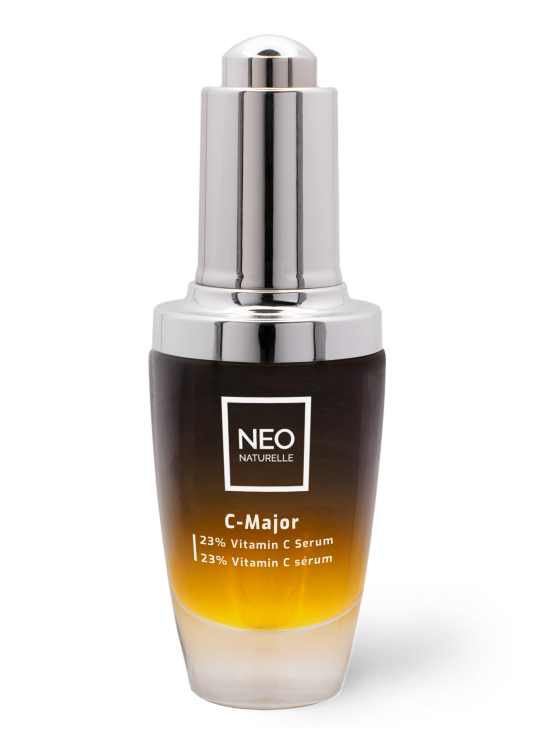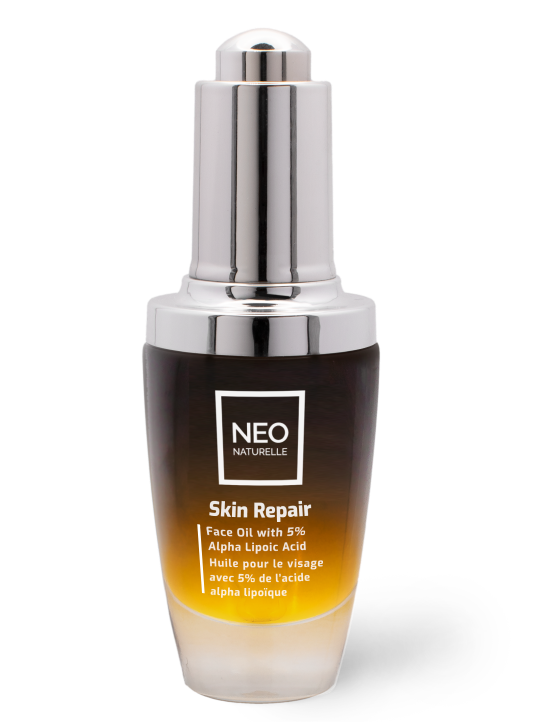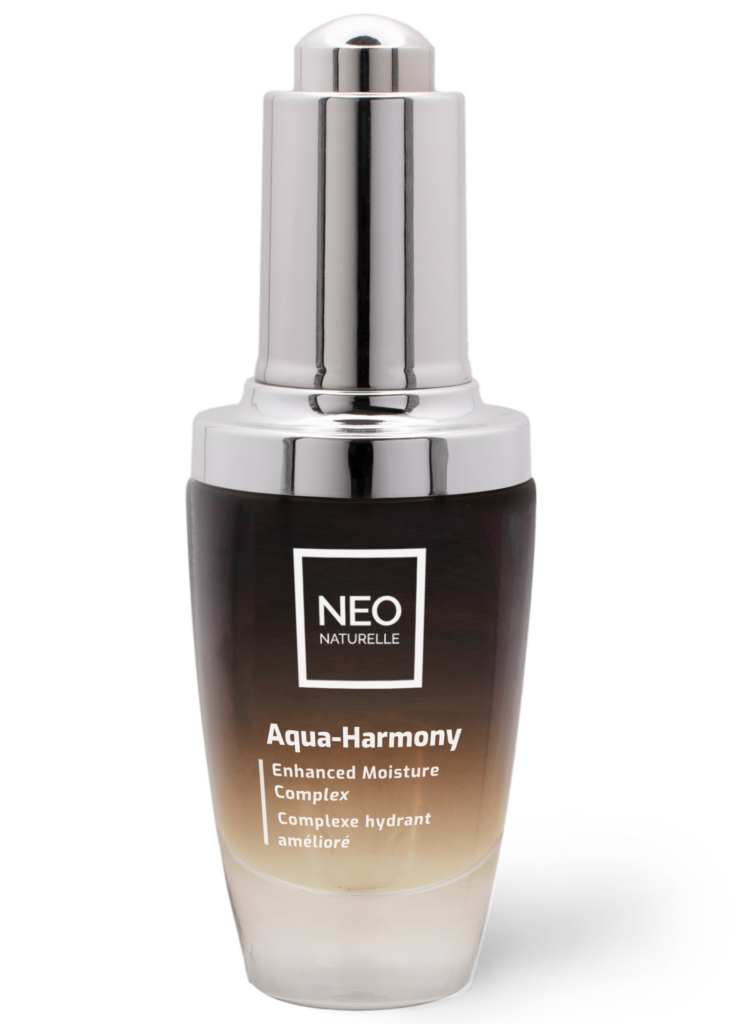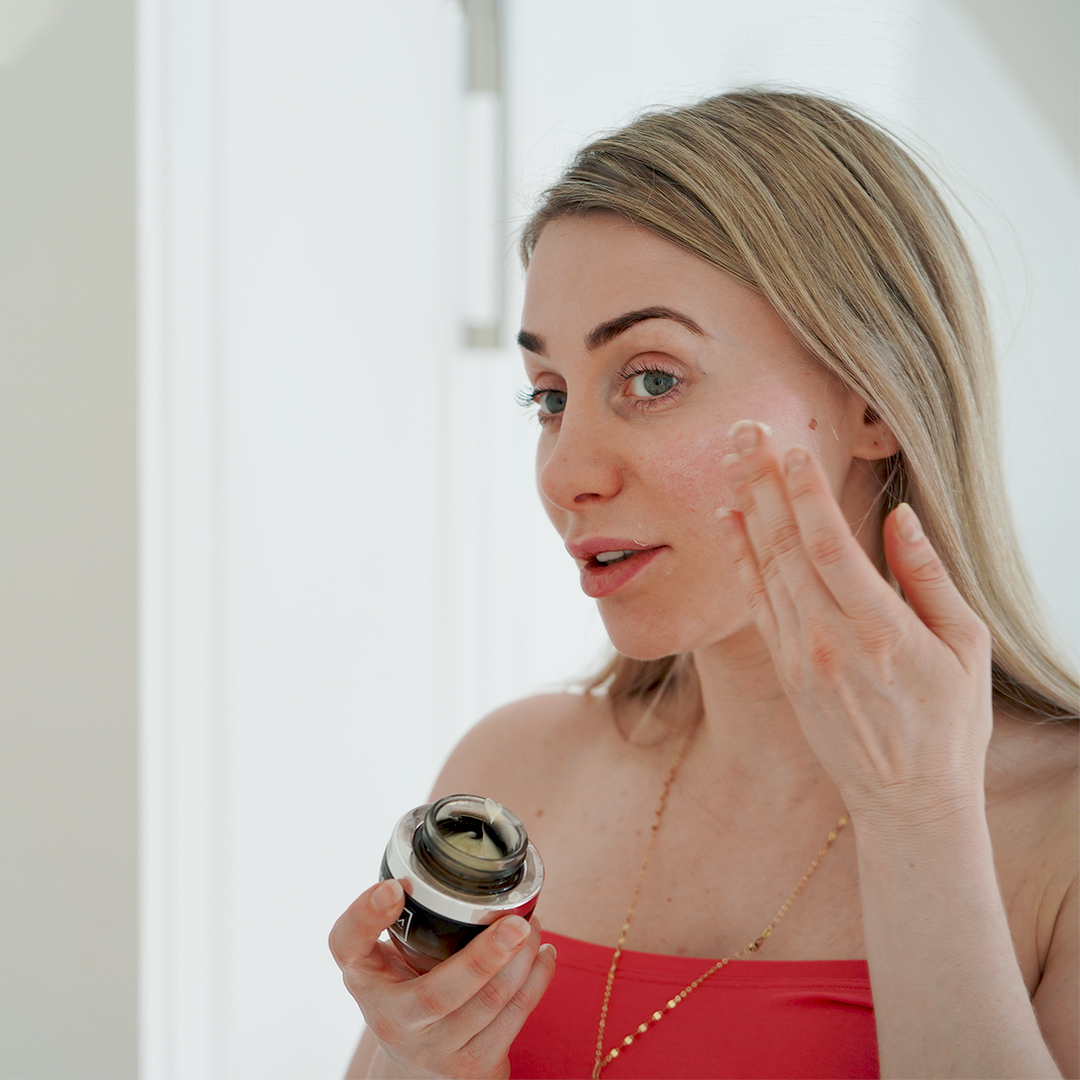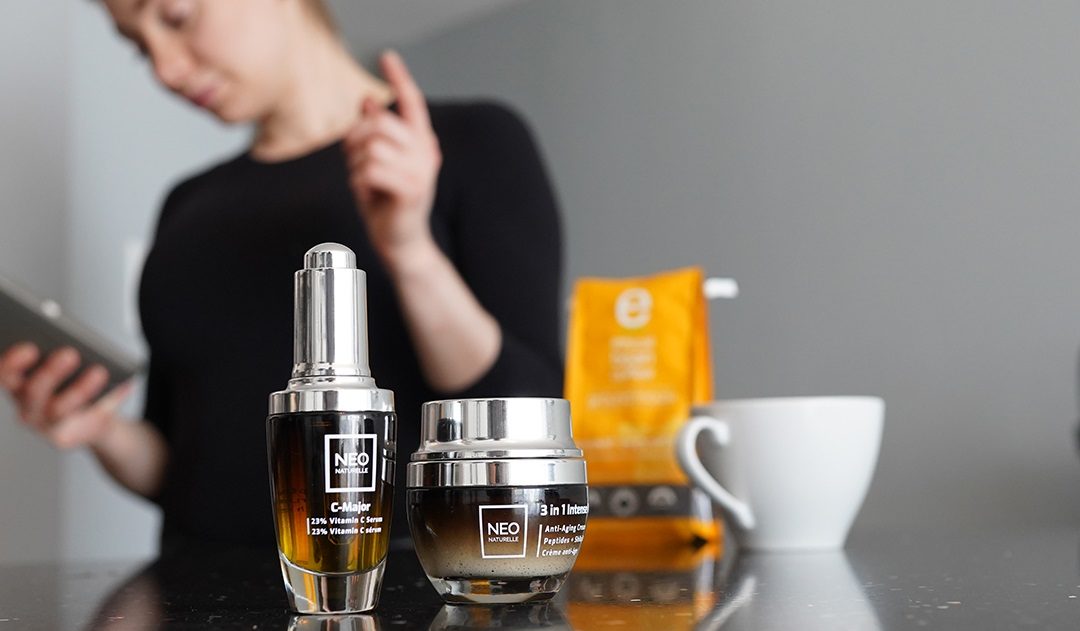The skincare market is flooded with products promising us the miracle cure. Some work, some pretend to work, others leave you completely disappointed. We find it is helpful to understand and include environmental factors as well as personal ones when evaluating a skincare product or a routine.
1. Aged Products
Some active ingredients have a short shelf life. Shelf life is the amount of time a product may be stored (exist on a shelf) before it deteriorates. In this case, it is the amount of time an active ingredient will remain active and continue to deliver results to your skin.
In North America, there is no requirement to put an expiration date on skincare or beauty products, which makes it difficult to determine when a product was made or when it is going to expire.
We recommend buying local products made by small to medium size companies. Products made in small batches are more likely to be freshly made. Large brands achieve cost efficiency via large scale production. However, they have to store products at distribution centers or ship them across the sea. By the time the product reaches its final destination – your home, it is already 6 – 8 months old. In addition, to ensure the product stays unspoiled for a prolonged period of time (up to 2 years) large scale producers have to add strong preservatives.
2. Poor Formulation
Some products start with good actives, such as peptides, retinol, and vitamin C. But in addition to actives, good formulations must also take into consideration product use and storage conditions.
For example, water-based Vitamin C containing products will disintegrate as soon as water and Vitamin C come into contact. Vitamin C decomposes become inactive. If the product has aged by the time you purchase it the concentration of active Vitamin C would have been significantly reduced.
Another example we see on the market is a combination of Retinol and SPF in one formulation. Retinol is a photosensitive ingredient and should only be applied at night. Sun protection suggests you should apply this product during the day, prior to sun exposure. It would be similar to the beverage formulation that has caffeine and sleeping aid in it. It is counteractive! In this case, either Retinol content is so low that it will not cause photo-sensitivity nor will it bring results, or it is formulated irresponsibly without any care for the potential side effects.
3. Poor Storage
Once the container has been opened and the product has been exposed to air and light, actives begin to disintegrate. Both Retinol and Vitamin C are sensitive to air and light, and even more sensitive to water. Fresh water-less formulations will give you a longer time to enjoy your products.
Packaging matters! Clear plastic jars are the worst. By the time you are finished with your skincare product, the actives have oxidized and degraded. Some active ingredients may even become harmful after prolonged exposure to the elements.
The best way to store your skincare product is to refrigerate it. Refrigerating your skincare products will give you a triple effect:
- Protect your product from sunlight
- Prolong the life of active ingredients
- Add the benefit of a cold, soothing application.
4. Low concentration of actives
Unfortunately, we all become victims of marketing ploys. We tend to believe what we read on the label, however, often advertised ingredients are not added at the maximum allowable amount. Instead, texture adjusters make your skin look good momentarily, while the actual clinically proven active is added in such low quantity that it makes no difference for your skin.
Brands proud of high quantities of actives in their formulation will specify the % on their label. For instance, NeoNaturelle C-Major Serum has 23% of Vitamin C
Another good indicator of how much active ingredient was added to the product is its placement on the ingredients listing. Based on Health Canada requirements ingredients must be listed in sequence of their quantity in the product. Ingredients listed at the very end are contained in the smallest amounts. Active ingredients listed at the end of the ingredients listing are unlikely to deliver any results, as their quantity would be too insignificant.
5. Product overdose
If you are a skincare junkie, you may be overloading your skin.
Our skin, just like our mind and body, needs an occasional break. If you ever read up on diet or exercise you know that periods of high-intensity exercise or strict diet have to be alternated by breaks/rest periods. This is when you reset your body processes and subsequently will achieve better results. The same concept applies to skincare.
If you have been using potent formulations for quite some time, stop it or switch to a different product. Your skin needs a break. We recommend giving your skin a break from strong actives a few days every month. Use a clean, mild moisturizer or baby balm. If your skin can tolerate it – do not apply anything, let your skin to breath and reset itself.
6. Weather conditions
Do you know that your winter cream must be different from your summer cream? You need to protect your skin from the environmental conditions especially considering our Canadian winters.
Winter skincare must have less water and more oils – use richer creams, water-less serums, and balms.
Summertime requires more hydration. Use hydrating creams, water-based serums, and gels.
7. Your skin is changing
There are multiple reasons why a cream that has worked for you before doesn’t feel as good anymore.
As we age – our skin becomes dryer. We need products that provide more nutrition to our skin
Hormonal changes can cause breakouts, dry, flaky, and dull skin. Your regular moisturizer is no longer enough. Time to introduce anti-aging ingredients.
Changes in the home or office environment also affect your skin. If your home or office has powerful heating elements and the air is dry, it will affect your skin. Do you spend a lot of time outdoors? Did you move to a different climate zone?
Stress, medication may change your skin as well. Listen to your skin. Adjust your skincare to your needs.
8. Lack of consistency
Skincare, similarly to diet and exercise, does not work from a single or occasional use. It only works if you are committed to it. The life of a human skin cell is anywhere between 4 to 6 weeks depending on your age. You need to commit to your skincare routine for this length of time to achieve results. Follow manufacturer recommendations. Rule of thumb is: moisturize twice a day, apply serum(s) at least once a day (unless specified differently).
9. Dead skin buildup
As we get older our skin cell turnover slows down. Layers of dead skin prevent active ingredients from effectively penetrating your skin. To give your skin a boost, use a good exfoliator on a regular basis. Look for a natural scrub or polish. Once you dislodge a layer of dead skin you will reveal the young skin cells. Allow those young skin cells to grow under the influence of good actives from your skincare.
10. Incorrect application
Layering products or using them in the wrong order could be detrimental to your skin. Some active ingredients are not compatible with each other.
Retinol containing products should not be used with Alpha Hydroxy Acid (AHA) containing products. AHA together with Retinol will make your skin very sensitive and dry. Never use Retinol products in the morning – only at night as Retinol makes your skin photosensitive.
If you have had skincare treatments such as chemical peel, laser resurfacing, or any other invasive treatments, give your skin a chance to heal. Use a healing balm or baby products.
If your skin is sensitive – minimize the number of products you use. Too many ingredients could be too much for your skin to handle. You may see irritation or breakouts.
Last but not least – manage your expectations. Know that brands that promise you immediate results are too good to be true. Immediate results are most likely driven by either optical illusion or short-term action. Even the fairy godmother was only able to give Cinderella till midnight. The look of your skin will be reversed back to its original state after a few hours because the product you applied did not fix the problem. Instead, it just camouflaged visual concerns ( puffiness, wrinkles, plumpness). Perhaps that is an acceptable solution before a ball, however, in the long run, you want to concentrate on the overall health of your skin. Then you won’t need band-aid fixes.
Be patient, choose well-formulated products, and stick to the routine – we promise you will see results!
